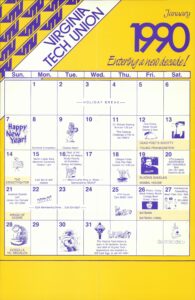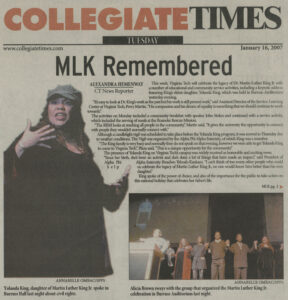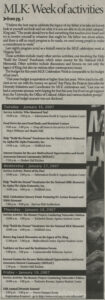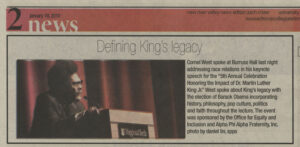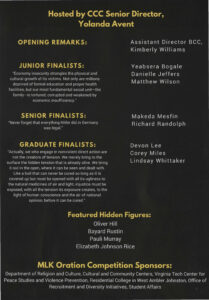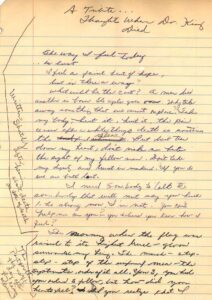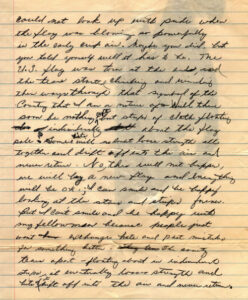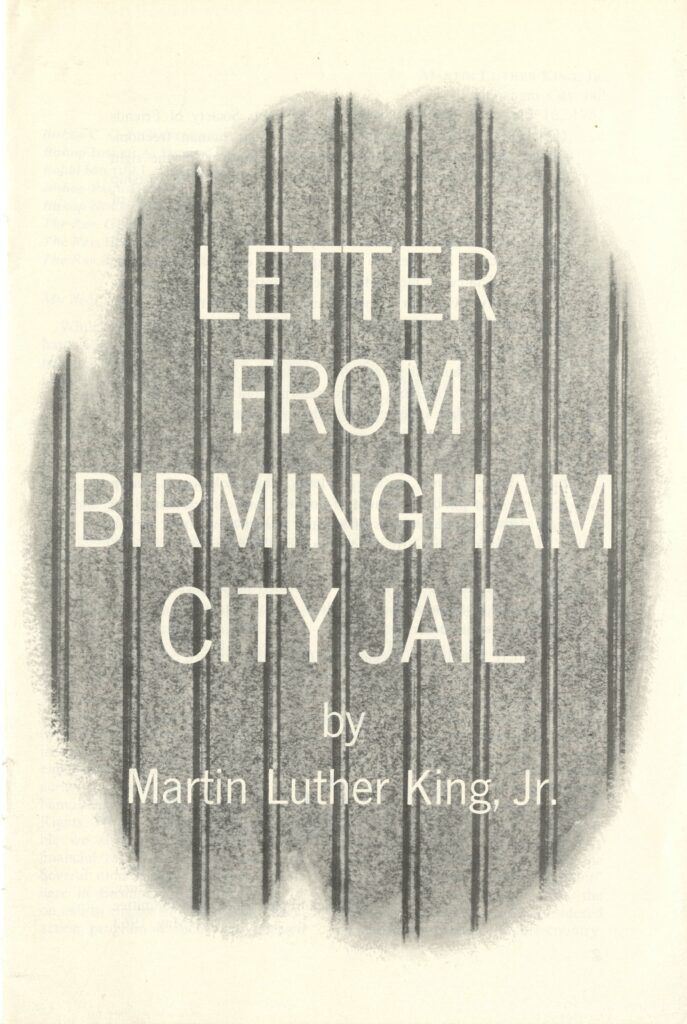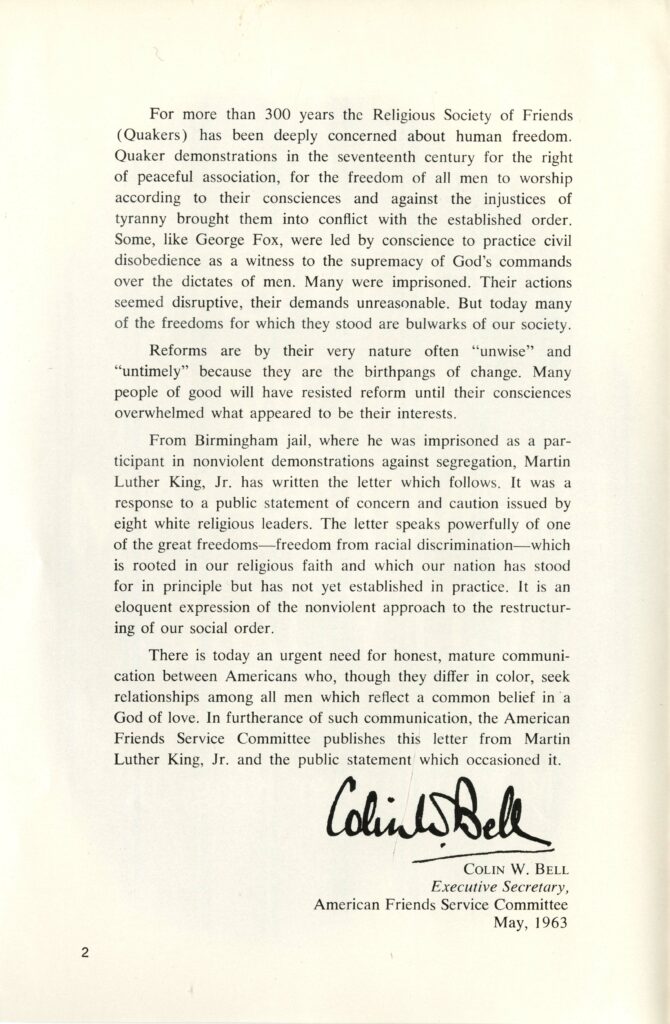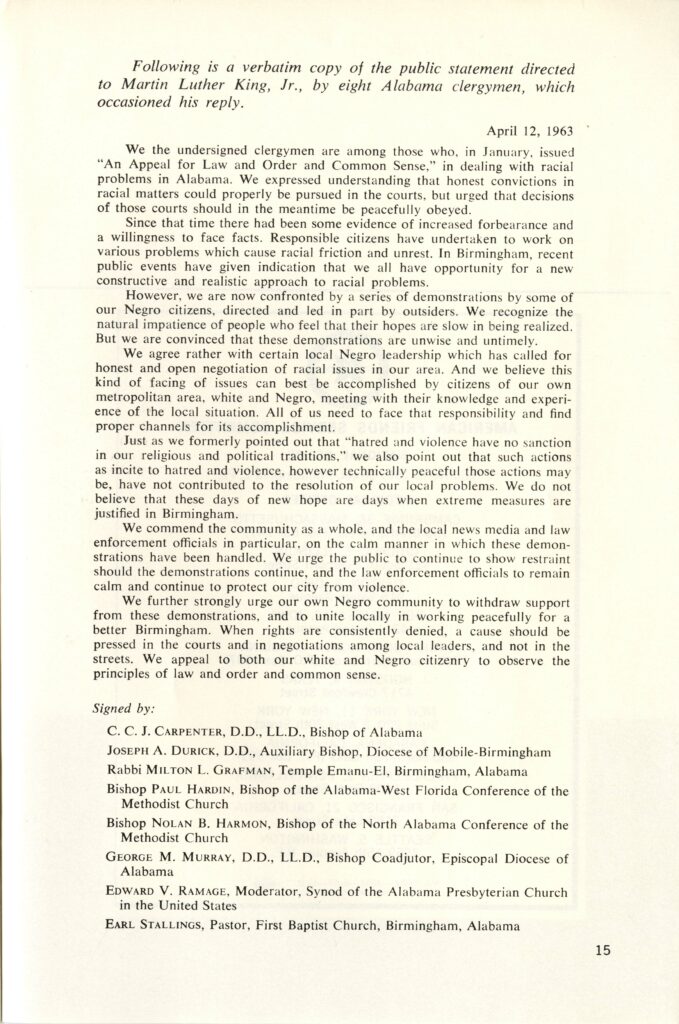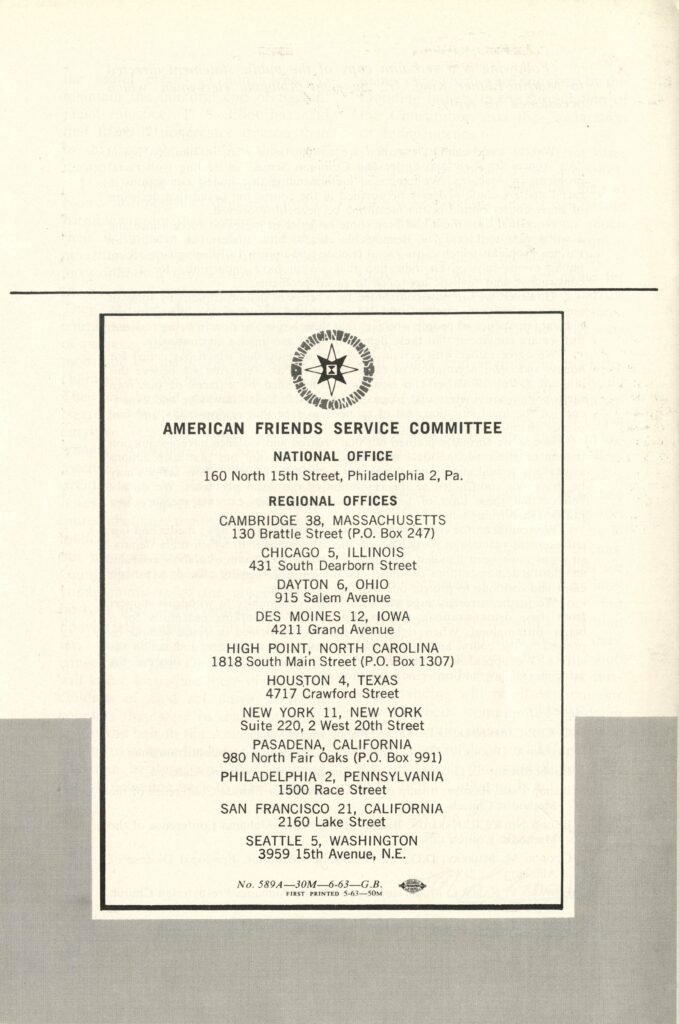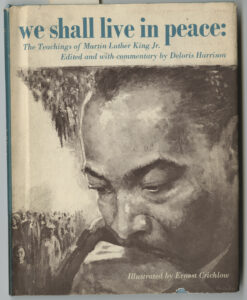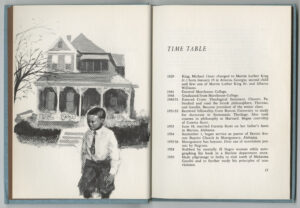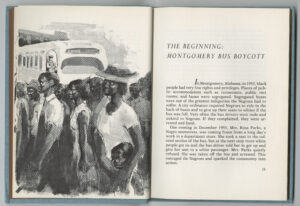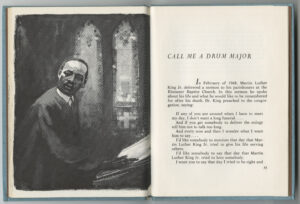This past Monday, January 16, was Martin Luther King Jr. Day in the U.S., and here at Virginia Tech we have been celebrating and remembering Rev. Dr. King and his legacy in numerous events all this week. If you haven’t been to any of the events, there are several more scheduled through next Sunday, January 28, according to the Hidden Figures: Community Practice of MLK (2018 Martin Luther King Jr. Celebration) page.
The university has celebrated Martin Luther King Jr. Day for awhile now. One of our graduate students Jamelle Simmons has been researching and updating the Black History Timeline for the University Archives. In his research, Simmons found several items about the university’s commemorations of Rev. Dr. King and his legacy, which have been hosted and sponsored over the years by the Virginia Tech Union, Alpha Phi Alpha fraternity, Black Caucus, Black Organizations Council, Black Cultural Center, the Office of Inclusion and Diversity, and others. Items include student event calendars, newspaper articles, and flyers. This year, the Cultural and Community Centers established the Rev. Dr. Martin Luther King Jr. Oration Competition as an annual event.
Rev. Dr. King has been remembered at Virginia Tech even before the establishment of the holiday, ever since his assassination on April 4, 1968. On the following day, students held a vigil at Burruss Hall surrounding the U.S. and Virginia flags. Initially the flags were raised to full mast, so mourners lowered both to half mast and protected the flags while talking to passersby about King’s ideals and nonviolent beliefs. Although they were forced to restore the flags to full mast, in the afternoon President Lyndon B. Johnson ordered flags lowered in King’s honor, which the university complied with. A transcript of The Virginia Tech (precursor to The Collegiate Times) article is available on the Black History Timeline.
Linda Edmonds, one of the first six Black women admitted to Virginia Tech in 1966, wrote notes of her thoughts upon Rev. Dr. King’s death (the first two paragraphs, written on April 4, 1968) and the initial raising of the flag to full mast (the last paragraph, written on April 5, 1968). The notes and transcript follow below:
A Tribute … Thoughts when Dr. King Died
The way I feel today … is lost.
I feel a faint beat of hope, but is there a way? What will be the cost? A man dies, another is born. The circle goes on. Why take away something that we cannot replace? Take my body, hurt it, hurt it, the pain ceases after awhile; though death is sometimes the final release. But don’t tear down my heart, don’t make me hate the sight of my fellow man. Don’t take my dignity and trust in mankind. If you do we are both lost.
I need somebody to talk to, somebody that will not say you have to be strong now, I’m not. You can’t help me can you? – You believe you know how I feel?
This morning when the flag was raised to its highest level–gloom surrounded my being. The march–step–step–step of the uniformed men–the systematic order of it all. You 3, you had your orders to follow, but how did your hearts feel? Did you realize that I could not look up with pride when the flag was blowing so powerfully in the early crisp air. Maybe you did, but you told yourself well it has to be. The U.S. flag was torn at the ends, the tears started climbing and winding their ways through that symbol of the country that I am a native of. Will there soon be nothing left but strips of cloth floating individually about the flag pole? Some bits will no doubt lose strength all together and drift off into the air and never return. No, this will not happen, we will buy a new flag and everything will be O.K.; I can smile and be happy looking at the stars and stripes forever. But I can’t smile and be happy with my fellowman because people just want to exchange hate and past mistakes for something better. The society tears apart – floating about in individual strips, it eventually loses strength and bits of it drift off into the air and never return.
In addition to these items related to the university, Special Collections has other publications by and about Rev. Dr. King. In the Bishop William H. Marmion Papers, Ms 1986-013, there is a pamphlet copy of King’s Letter from Birmingham City Jail, published by the American Friends Service Committee in May 1963. For those of you who may not know, Birmingham leaders working with King and the Southern Christian Leadership Conference (SCLC) began protesting segregation in the city with organized demonstrations in April 1963. The city obtained an injunction against the protests, which the leaders disobeyed, resulting in King’s arrest. Several local white clergymen publicly criticized the protests, prompting King to respond with the now famous letter. In it he defends his participation as an “outsider,” explains the value and steps of a nonviolent campaign, and questions the clergymen’s insistence on waiting for a resolution to continued injustice.
According to the King Encyclopedia by Stanford University’s King Institute, Rev. Dr. King gave the American Friends Service Committee (AFSC), a Religious Society of Friends (Quakers) organization, permission to publish the letter in May 1963 as a pamphlet. The group had been working with King since 1956 after the Montgomery bus boycott, but they had been involved with anti-racism activities since the 1920s, only a few years after their founding during World War I. With permission from King, the AFSC distributed 50,000 copies of the Letter from Birmingham Jail in 1963, and that same year nominated him for the Nobel Peace Prize, which he was awarded the following year.
Here are a few select pages from our 1963 copy of King’s Letter from Birmingham City Jail, published by the AFSC. For the complete letter, view the pamphlet in King Center’s Digital Archives.
Another item in our collections is the book, We Shall Live in Peace: The Teachings of Martin Luther King Jr., edited by Deloris Harrison and illustrated by Ernest Crichlow. The book outlines King’s life and discusses several significant steps in his fight for civil rights, including excerpts from his writings. Born in Bedford, Virginia, Harrison graduated from St. Joseph’s College, Brooklyn, and received a master’s from New York University in 1963. She began teaching in New York City in 1961, and was chosen as a Fulbright teacher in 1966. Crichlow (1914-2005) was a Brooklyn artist coming out of the Harlem Renaissance and known for his works concerning social injustice for African Americans. According to his New York Times obituary, he studied commercial art in Manhattan and worked in the Works Progress Administration’s Federal Art Project. In 1957, Crichlow cofounded and served as first chairperson of the Fulton Arts Fair, which showcased the works of both new and established artists in the community. The Petrucci Family Foundation’s Collection of African-American Art entry on Crichlow states that in 1980, President Jimmy Carter honored Crichlow and nine other black artists from the National Conference of Artists at the White House.
A few excerpt pages from We Shall Live in Peace by Harrison and Crichlow appear below, and I encourage anyone interested to come into Special Collections to see this beautiful book.
Of course, there are numerous other items in our collections related to Rev. Dr. King and the greater Civil Rights Movement of the 1960s (and before and after), so I hope that you will come into Special Collections to take a look for yourself. And don’t forget to attend some of the events planned for the annual celebrations for Martin Luther King Jr. Day here at Virginia Tech and in the local community.
